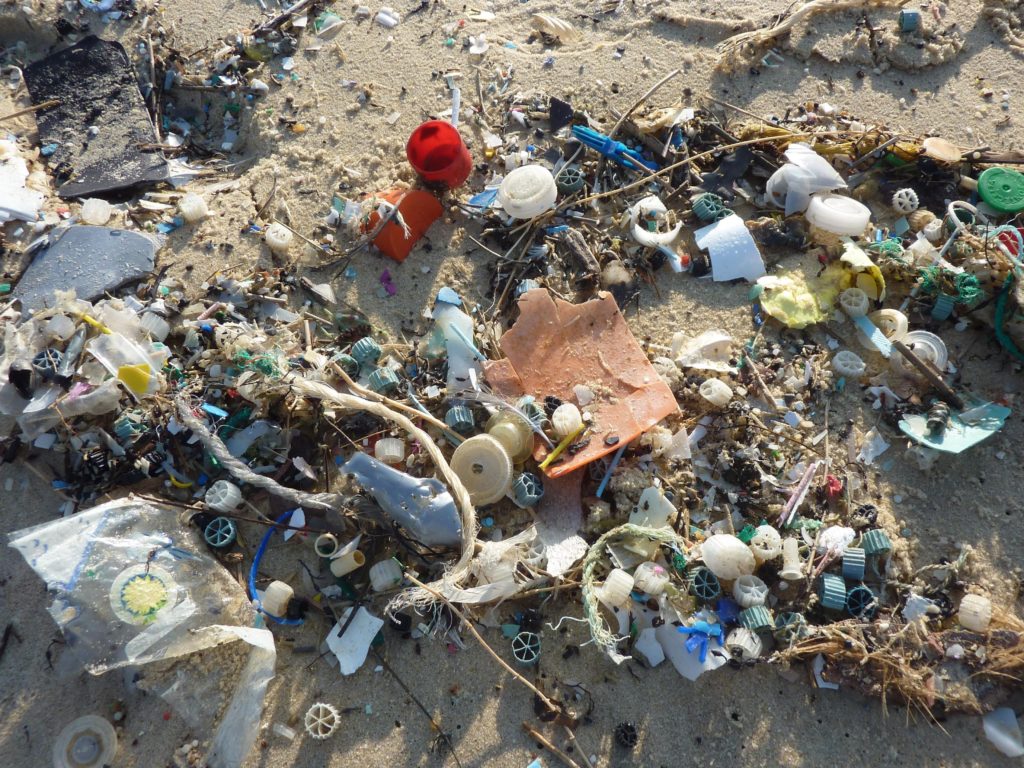Around 25.8 million tons of plastic waste are generated in Europe every year, of which less than 30 percent is collected for recycling. Of this amount, a significant share leaves the EU to be treated in other countries, where different environmental standards may apply. From the EU alone, 150,000 to 500,000 tons of plastic waste enter the oceans every year.
On January 16, the EU Commission published a strategy on plastics, which lays out the EU’s approach to reduce plastic pollution. This plastic strategy is part of the Circular Economy approach that the EU Commission promotes as a solution to protect the environment while also opening new business opportunities. The aim of the EU Circular Economy Action Plan is to create an economy “where the value of products, materials and resources is maintained in the economy for as long as possible, and the generation of waste minimized.”
The EU’s plastic strategy includes plans to develop new rules and processes to:
- Improve the recyclability of plastic packaging,
- Reduce single-use plastics,
- Prevent the loss of fishing gear at sea,
- Limit the use of ‘oxo-degradable’ plastics,
- Support national awareness campaigns by national public authorities to prevent littering and clean up beaches, and
- Restrict the use of intentionally added microplastics in products like cosmetics and detergents, in line with the REACH procedures for restricting substances that pose a risk to the environment or health.
The EU’s plastic strategy is a major step in the right direction and reflects ongoing efforts by NGOs to spread information and awareness on key topics like single-use plastics and microplastics. Nevertheless, the scope of plastic pollution and the planned increased in global plastic production requires us to go beyond the envisaged actions and develop comprehensive measures that reliably protect human and environmental health from the threats of plastic pollution.
Oxo-degradable plastics
Oxo-degradable plastics have been hailed as a safer, biodegradable alternate to plastic packaging. However, these plastics have no proven environmental advantage over conventional plastics. Instead of truly degrading in the environment, they quickly fragment into microplastics, which are less detectable but continue to cause serious environmental concerns. For that reason, CIEL and more than 150 partner organizations have called for a ban on oxo-degradable plastic packaging. With its new plastics strategy, the EU is beginning to take steps toward restricting oxo-degradable plastics, which is a welcome development.
Microplastics
Microplastics are tiny plastic particles that can be ingested through food, water, air, or soil because of their small size. These particles have harmful impacts on the health of animals and humans. The EU’s proposed restrictions on microplastics are a promising development, and CIEL hopes that this process will lead to a comprehensive ban of all microplastic ingredients.
Toxic chemicals
Plastic often carries harmful chemicals. For example, some plastics include endocrine-disrupting chemicals, which affect the hormone system and can lead to negative effects on reproduction and increased risk of chronic diseases like cancer. The EU’s Circular Economy approach can only truly work if there are no toxic materials in the plastic that is recycled. Otherwise, these materials will spread further into other products and the environment, and they will continue to harm people and the planet. For that reason, the EU must take further measures to completely ban plastics that include toxic chemicals and make sure that recycling targets do not lead to the increased presence of toxics substances in consumer products.
Global efforts to tackle plastic pollution
The problem of plastic pollution cannot be solved by Europe alone. Products consumed in Europe often involve a global supply chain, and the EU is also affected by pollution occurring elsewhere. For example, a fish may ingest microplastic in its country of origin and later be caught and sold as food to customers all over the world, including Europeans. Because of the global nature of the plastic waste problem, the EU should expand its strategy beyond its borders and participate in an agreement that sets global reduction targets for the production and consumption of plastics.
In this spirit, the resolution adopted at the third meeting of the United Nations Environment Assembly (UNEA3) this past December in Nairobi is one step in the right direction: Member States supported actions to stop plastic litter and microplastics from entering the oceans, including by preventing plastic waste, increasing reuse and recycling, avoiding unnecessary plastic use, and highlighting the role of “extended producer responsibility,” which holds producers responsible for managing the waste generated by their products.
To really make a difference, we must tackle plastic throughout its entire lifecycle, including its disposal and fragmentation in all ecosystems (including air and oceans). The EU plastics strategy takes us one step closer to tackling the global plastics crisis in a sustainable way, but it’s only the first step in what promises to be a very long road.
By Carmen Steg, Geneva-based intern
Originally posted on February 5, 2018

